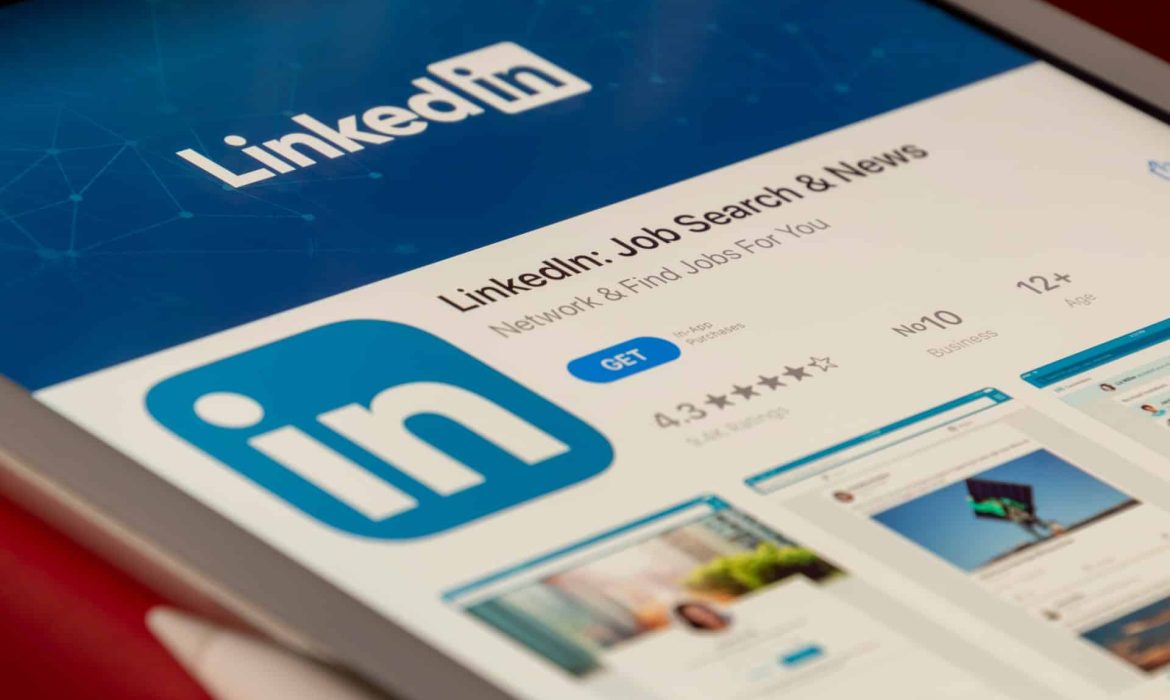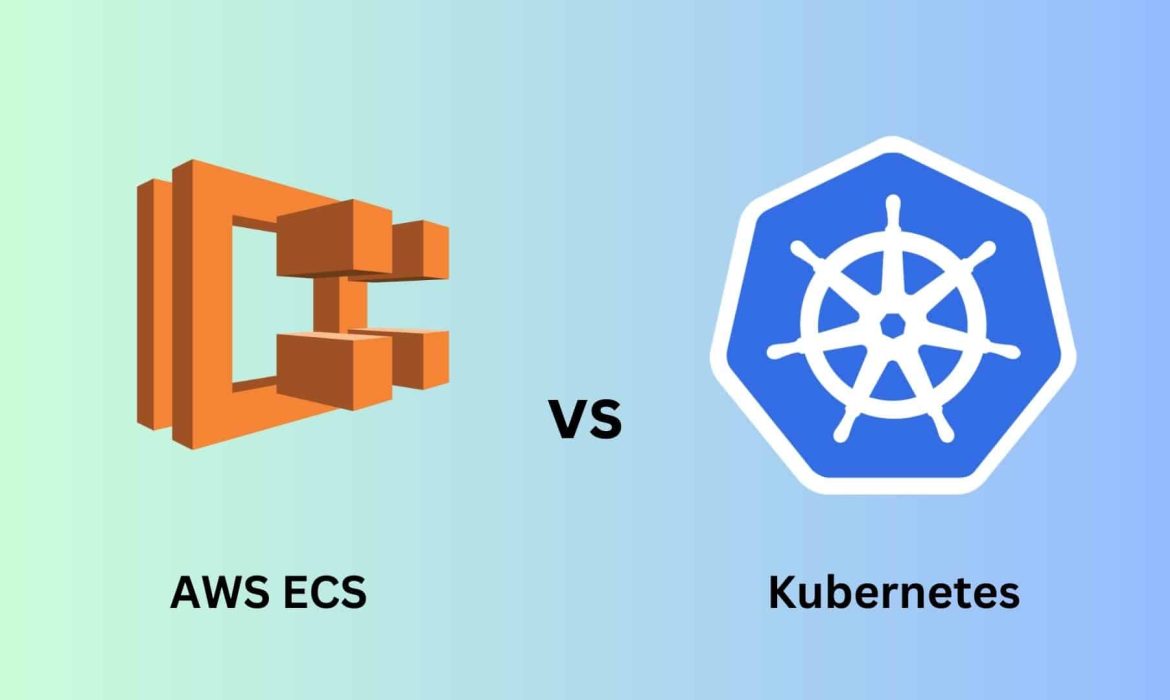Search Engine Ranking Reports: Unveiling SEO Tools and Strategies
The visibility of a website is paramount to its commercial success. This is where search engine ranking reports come into play. These reports provide vital insights into where the web pages rank on search engine results pages (SERPs), with a particular focus on Google. They enable us to understand a website’s performance. The impact of search engine ranking reports on SEO strategies cannot be overstated.
What exactly is a search engine ranking report?
Search engine rank reports offer a comprehensive overview of how a website performs in search engine results for specific keywords. A report involves keyword-based ranking, click through rates for various pages, organic traffic, as well as on page recommendations, among other things.
Consider a typical Google SERP (Search Engine Results Page) for a moment. When a user types in a search term, the websites listed on the first page tend to attract the lion’s share of clicks. Consequently, achieving a high ranking on SERPs is crucial for driving organic traffic to the site. The search engine rank report helps you pursue this goal through data-driven decision making and insightful strategies.
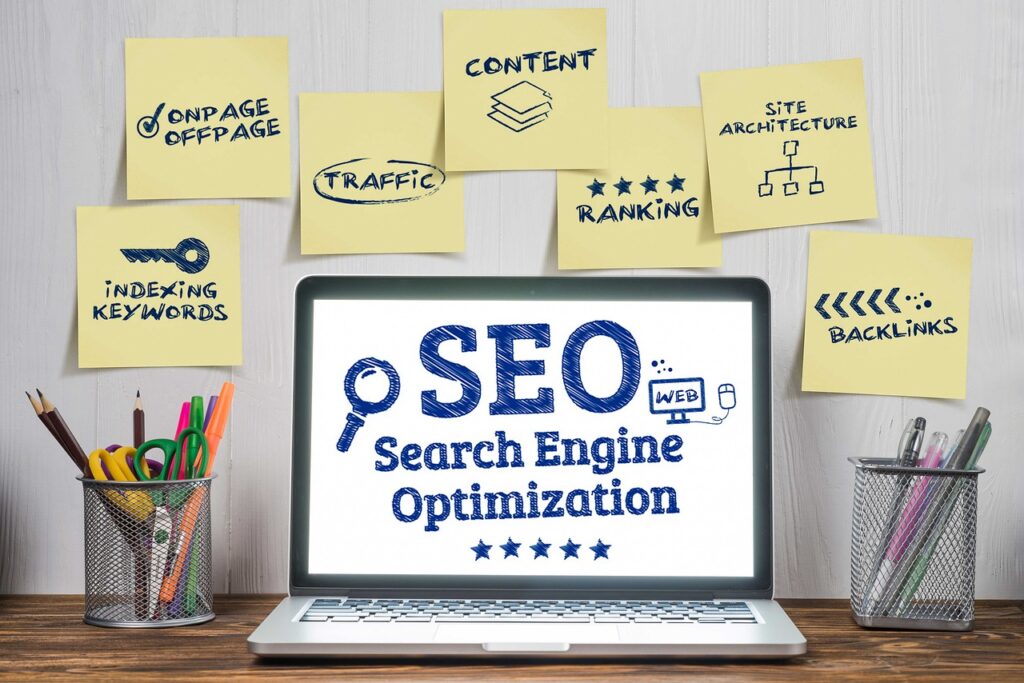
A search engine ranking report allows you to align your website with the keywords in queries people are entering into search engines. These reports can also be used to compare keyword performance against that of competitors. While Offering deeper insights into the industry’s competitive landscape.
Also Read – What are Impressions on LinkedIn? How to Track
Leveraging Search Engine Ranking Reports
Search engine ranking reports serve as a treasure trove of data to assess a website’s performance and guide SEO efforts.
Keyword Optimization:
To ensure that the website aligns with the target audience’s search queries, it’s crucial to optimize content for specific keywords. Each webpage should focus on a primary keyphrase, ideally one that resonates with users’ online searches. Search engine ranking reports come into play by revealing whether the site ranks on Google for chosen keywords and how effectively those keywords attract visitors.
Tracking Progress:
The digital landscape is dynamic, with constant shifts in search engine algorithms and user behavior. To stay ahead, it’s essential to monitor the website’s performance over time. As make changes to the site and optimize content, the ability to track search engine ranking reports helps assess the impact on search rankings. Improving web pages’ positions in search results is the key to driving organic traffic.
Sources of Search Engine Ranking Reports
The availability of ranking reports is diverse, ranging from websites and SEO software to WordPress plugins. The choice of “best tool” depends on the complexity of the website and specific business requirements. Some websites manage numerous pages and thousands of keywords, while others have a more modest scale.

1. Google Search Console:
Google offers its suite of tools to assess a website’s performance in its search results without tracking for an SEO agency. And Google Search Console provides insights into Google search behavior, showcasing how a site’s traffic fluctuates for different search terms. It also highlights the search terms most likely to display the site and identifies webpages with the highest click-through rates (CTR) from search results. One can access ranking reports by navigating to the Search Results section within the Search Console.
2. Semrush:
Semrush is a comprehensive SEO and keyword research platform trusted by businesses of all sizes. It offers a wide array of SEO tools and data. Among them, the Search Engine Position Report is particularly noteworthy. The same provides a holistic view of a website’s keyword ranking report, including the number of keywords the site ranks for, expected traffic, average position, and changes over time. Semrush’s Landscape report, part of the Search Engine Position Report. And the same offers an overview of keyword performance and trending changes. The Pages report, on the other hand, delves into web pages’ rankings.
3. MonsterInsights (for WordPress):
MonsterInsights, the premier Google Analytics plugin for WordPress, brings the power of analytics directly to the WordPress dashboard. By connecting MonsterInsights to Google Search Console a user can gain access to critical ranking data. The Search Console report within MonsterInsights reveals the search terms driving the most visitors to the site. And provides essential metrics such as clicks, impressions, and click-through rates along with the average position for each search term.
Also Read – What is Google WM Max LLC Charges and How to Manage Them
The Power of Informed Decisions
Search engine ranking reports are the gateway to understanding a website’s performance in the ever-evolving digital realm. These reports empower us to optimize content for relevant keywords and track progress over time. And make data-driven decisions to enhance the site’s visibility and organic traffic.
Google Search Console, Semrush, and MonsterInsights are valuable tools that offer unique advantages based on specific needs and the scale of the website. Leveraging these tools effectively can lead to improved search rankings and increased organic traffic. And ensuring a more robust online presence.
While embarking on an SEO journey, staying informed about the website’s performance is essential. Regularly analyzing search engine ranking reports, adapting strategies based on the insights gained, and watching websites rise through the ranks in search engine results can help a lot.
With the right tools and strategies at their disposal, one can navigate the digital landscape with confidence. Ensuring that your website not only survives but thrives in the competitive online world.
What is Google WM Max LLC Charges and How to Manage Them
It’s not uncommon to come across unfamiliar charges on your credit card statement in 2023. One such charge that has left many scratching their heads is “Google WM Max LLC.” What does it mean, and how can you manage it? This comprehensive guide will unravel the mystery behind this charge. And provide the reader with all kinds of information they need to navigate effectively.
What is Google WM Max LLC Charge?
1. Google:
The name “Google” needs no introduction. It’s the tech giant responsible for the world’s most popular search engine, among many other services and products.
2. WM:
This acronym stands for WarnerMedia, which is the parent company of HBO. HBO Max is a streaming service offering a vast library of movies, series, and original content.
3. Max:
Here, “Max” is a clear reference to HBO Max, WarnerMedia’s flagship streaming platform.

Is WM max llc HBO max?
Based on this breakdown, it’s safe to conclude that “Google *WM Max LLC” most likely refers to HBO Max, which is a service owned by WarnerMedia, and the charge could be related to your subscription or usage of HBO Max.
Also Read – What are Impressions on LinkedIn? How to Track
Possible Reasons for the Charge
Now that we’ve identified what “Google WM Max LLC” represents let’s explore why you might see this charge on your credit card statement:
1. HBO Max Subscription:
If you have an HBO Max subscription, you will regularly see charges associated with the service. These charges cover your access to HBO Max’s extensive content library.
2. Google Billing:
Google Play Store is a platform through which you can subscribe to various services, including HBO Max. If you’ve subscribed to HBO Max through the Google Play Store, you may see charges processed through Google billing, hence the reference to “Google” in the charge description.
3. Unauthorised Charge:
In some cases, the appearance of “Google WM Max LLC” could be due to an unauthorised charge. If you did not knowingly subscribe to HBO Max or use a service connected to this charge, it’s essential to investigate further to ensure your financial security.

What to Do if You Spot an Unauthorised Charge?
If you suspect that the “Google WM Max LLC” charge is unauthorised, it’s crucial to take immediate action to protect your financial well-being:
1. Contact Your Bank or Credit Card Provider:
Reach out to your bank or credit card issuer as soon as possible. Report the suspicious charge and ask for their guidance on the next steps.
2. Dispute the Charge:
Most financial institutions have processes in place to dispute unauthorised charges. Provide them with all relevant information, and they will investigate the issue.
3. Secure Your Account:
Change your account passwords and enable two-factor authentication to prevent further unauthorised access.
4. Review Your Statements:
Regularly review your credit card and bank statements for any unusual activity. Promptly report any suspicious charges to your financial institution.
Also Read – What Does Urge Delivery Mean on Shein? Solutions to Get Your Package Fast
Managing Google WM Max LLC Charge
1. Check Your Subscription:
Review your HBO Max subscription details to ensure they align with the charge. Confirm that you have an active subscription.
2. Review Payment Method:
Ensure that the payment method linked to your HBO Max account is up-to-date and accurate.
3. Verify Billing Source:
If you subscribed to HBO Max through a third-party service like Google Play Store, verify the source of the charge to ensure it’s correctly attributed.
4. Contact HBO Max Support:
If you have questions or concerns about the charge, it’s advisable to reach out to HBO Max’s customer support for clarification and assistance.

Understanding Other Google Charges
Here are some common scenarios where you might encounter Google-related charges:
1. Google Play Store:
If you purchase apps, games, or digital content from the Google Play Store. You’ll see charges related to these transactions on your credit card statement.
2. YouTube Premium:
YouTube Premium offers ad-free, offline, and background playback features. If you subscribe to YouTube Premium, you’ll notice charges associated with this service.
3. Google Workspace:
Businesses often use Google Workspace for email, document collaboration, and more. If your organisation uses Google Workspace, you may see charges for your subscription.
Also Read – How to Leave a Life360 Circle: A Step by Step Guide
Secure Your Accounts
In 2023, it’s essential to stay vigilant and monitor your financial statements regularly. And the following tips will make the vigil an easily available one.
1. Keep Records:
Maintain records of your subscriptions and online purchases, including confirmation emails and receipts.
2. Set Alerts:
Many banks offer account alert features that notify you of specific transaction types or when your balance falls below a certain threshold.
3. Review Statements:
Take the time to review your bank and credit card statements each month. Look for any unfamiliar or unauthorised charges.
4. Use Strong Passwords:
Use strong, unique passwords for your online accounts, and enable two-factor authentication whenever possible.
5. Report Suspicious Activity:
If you ever spot a charge that seems suspicious or unauthorised, report it to your financial institution promptly.
Conclusion
The “Google WM Max LLC” charge, as we’ve deciphered, is most likely related to HBO Max. However, it’s crucial to be vigilant about your financial statements and act swiftly if you ever encounter unauthorised charges. By staying informed and proactive, you can effectively manage your finances and enjoy peace of mind in your digital transactions.
What are Impressions on LinkedIn? How to Track
In the world of LinkedIn, there is a critical metric: LinkedIn Impressions, which significantly impacts your marketing and professional strategy. So, today in this post, let’s figure out what is Impressions on LinkedIn!
LinkedIn, the employment and business-focused social media platform feels simple when you’re scrolling through posts, but anyone who’s spent time on the backend knows anything but.
Meanwhile, tracking your success on LinkedIn is a surefire way to make your Instagram marketing more effective. Like other social media platforms, LinkedIn collects and organises a variety of metrics to assist you in knowing about your achievements and accolades.
But what does impressions mean on LinkedIn, and most importantly, why should a user care?
This guide gives you the definitions you seek along with tips on how to use Impressions on LinkedIn to improve your connections game and social media marketing.
What is an Impression on LinkedIn?
The term Impressions, on LinkedIn, specifies how many times your post or content has been displayed on a screen. For instance, if a user X posts something on LinkedIn and another user comes across it, that will be counted as an impression. At the same time, if a user engages with the post five times, that would be counted as five impressions.
How LinkedIn Impressions Work?
Users often confuse post impressions with exposure and engagement, so here’s a clarification regarding the same. However, impressions don’t signify engagement, nor do they indicate any form of interest from the user.
In simple words, LinkedIn impressions are the measure of visibility. The higher the number of LinkedIn impressions, the more your content has reached a user’s screen.
Meanwhile, it is worth noting that LinkedIn’s algorithm prioritises content that has received numerous reactions, likes, comments, and shares on the platform.
Also Read – The Marketing Automation Bizleads Summit 2023 Hits Las Vegas
Importance of LinkedIn Impressions
The number of impressions your post is receiving is beneficial for LinkedIn marketing and assists you in keeping a check between rich and visibility. Additionally, impressions on LinkedIn also represent a user’s interest in your shared post. That means the higher the impressions you receive, the more your post has been seen.
On the other hand, you can feel confident your content is being seen and users are engaging if you have a healthy number of connections. Analysing impressions alongside other LinkedIn metrics, like reactions, clicks, and shares, will help you demonstrate your post’s success.
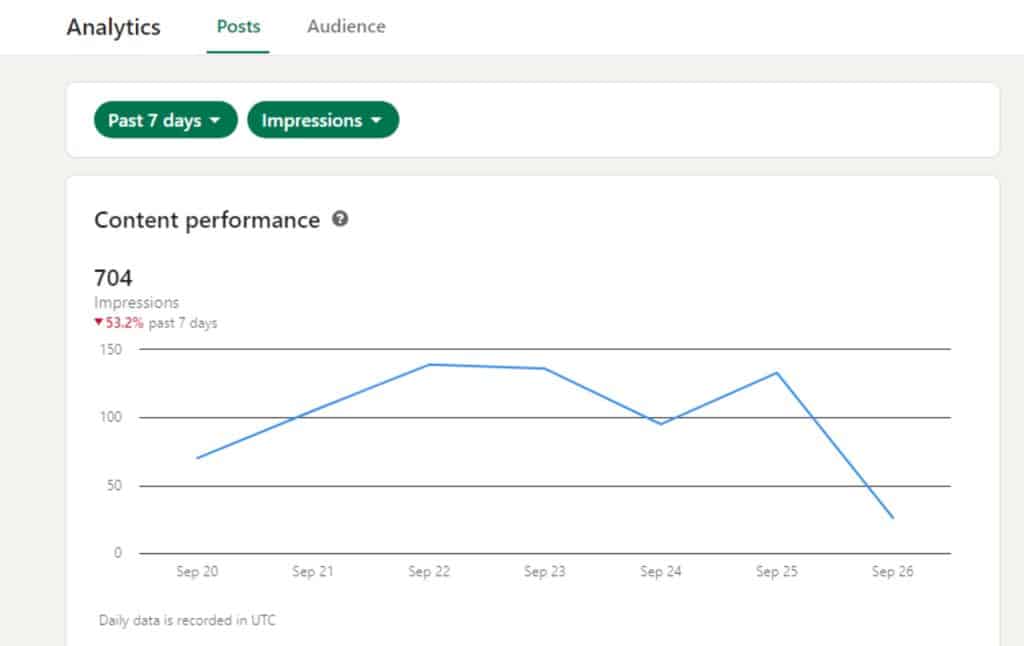
Types of LinkedIn Impressions
The Impressions Metric shows how many different users have engaged or seen your post. There are different types of impressions. Additionally, specified three of them are,
Organic Impressions
Firstly, Organic Impressions on LinkedIn refer to the number of impressions gathered by users who saw your post in their feed. In other words, for Organic Reach, you don’t have to pay for an advertisement to show your content. These impressions probably come from the users who are already part of your LinkedIn connections.
To gather organic impressions, you should be sharing posts which give a valuable, interesting, and positive approach to your audiences. This could include posts related to Industry news, providing information about your field of expertise,
Viral Impressions
Secondly and most importantly are Viral Impressions which can only be obtained after a user shares your post. Meanwhile, if your post has received viral impressions, that means your post is reaching beyond your audience.
To receive viral impressions, it’s important to create a post that can be relatable, engaging, and informative enough to be shared by a LinkedIn user.
In addition, it is important to engage with your audience by replying to the comments, captioning your post with tagged questions and participating in group discussions. Moreover, this will not only assist you in receiving viral impressions but will help you in improving your connection game.
Paid Impressions
Paid impressions, the third and last one. This means your post receives impressions from LinkedIn users who saw your content because of a paid advertisement.
If you want to promote your organisation’s product or engage with a target audience, the paid impression could be the best option. Meanwhile, you can choose a variety of ad formats. Meanwhile, this includes sponsored content, sponsored InMail, and display ads, and aims the target user to reach the right audience for your business.
Although it is an Organic impression, paid impression, or viral impression, it is necessary to craft your respective post with proper grammar and meaningful information. Meanwhile, this will also encourage a LinkedIn user to share your post.
Also Read – What Is Bandwagon Advertising? Example, Advantage And More
Factors Affecting LinkedIn Impressions
Content Quality
When it comes to establishing a strong connection on LinkedIn, it’s beneficial for the respective users to prioritise the quality of their content. By crafting thoughtful, engaging, and knowledgeable posts users can resonate with their audience. Moreover, users can effectively build connections and establish themselves as a valuable contributor to LinkedIn.
Whether sharing industry insights, thought leadership pieces, or personal anecdotes, taking the time to create high-quality content is key to success on LinkedIn.
Regular Sharing
Additionally, one should be posting daily to receive more connections and eventually gather organic impressions.
Engaging with Audience
Another one is audience engagement. To gain this, a user should craft a post along with questions that might influence LinkedIn users and your connection to share, react, or comment on your post.
Hashtags and Keywords
Moreover, hashtags and keywords have several beneficiaries. Any LinkedIn user can view your shared and crafted posts by using hashtags and keywords and not just your connection or follower. This also helps the LinkedIn algorithm understand what your post is about so it can be displayed to the target audience.
Conclusion
LinkedIn Impressions provides assistance and maintenance that has proved to be immensely useful. With them, you can gauge the level of engagement and interest generated by your posts. By knowing and understanding the number of views, clicks, and shares, you can gain a better explanation of your target audience and tailor your content accordingly. Hence, investing time and resources in tracking your LinkedIn impressions can be helpful. As it can go a long way in increasing the effect of your social media marketing efforts.
What Is “Quiet Mode On Instagram” And How To Use It Like It Like A Pro: Step-By-Step Guide
Instagram has come again with an updated Newfangled and useful feature “Quiet Mode.” Check the details here!
Meta-owned Instagram is one of the most popular Instagram platforms. Over the years, the renowned social media app company has added new features to the app to improve its user performance. Now Instagram has recently released the Quiet Mode support. With this feature, users can limit their daily usage of Instagram. Meanwhile, with this write-up, know “quiet mode on Instagram” meaning, its uses, and the features related to it.
What is Quiet Mode on Instagram?
Instagram is constantly working to bring a host of new features. Among them is the Quiet Mode Feature which assists a netizen to organise and manage their conversation efficiently. Meanwhile, this feature pauses notifications and automatically sends an opposite response inactivity to users who send you private messages.
Moreover, this feature is particularly useful for teenagers who need to study at night without any distractions. With the help of the time limit, they can focus on their studies without getting lost in the endless scrolling of Instagram. This new Instagram feature is a step towards promoting responsible social media usage and ensuring that the app does not become a distraction in our daily lives.
Also Read – What is Squirdle: The Pokémon-Powered Wordle-Like
How to Turn on Quiet Mode on Instagram?
Like other Instagram features, enabling quiet mode is quite simple on Instagram. All you need to follow the following steps,
- Go to the Instagram app
- To access your profile, tap on the picture located at the bottom right corner of the screen.
- Click on the three lines placed in the top right corner.
- After, go to the settings option and click on the notifications tab.
- Lastly, in the notification tab, you will find the “Quiet mode” option. Nevertheless, if it doesn’t appear, either your app is not updated or the function is not active in your country.
- To customise the quiet mode setting, you can choose the specific time range when you want the feature to be active. Simply tap on the “From” and “To” fields to select the time period during which you want the quiet mode to be activated.
And, you’re done! Now you can relax and focus on your studies/goal while avoiding the Instagram distraction.
How to turn off Quiet Mode on Instagram?
If you’re facing difficulties navigating through the Quiet mode on your Instagram handle, don’t worry! We’ll tell you an easy-peasy solution. Meanwhile, you can deactivate the Quiet mode by simply following the same steps that you took to activate it. Once you reach the notifications section of your device, the option to disable Quiet mode will be accessible. This option is conveniently located and easy to access. With just a few clicks, you can turn off the Quiet mode and return to the regular mode of operation.
Also Read – The Best Alternatives to Gramhir to Elevate Your Instagram Analytics Game
Uses of Quiet Mode on Instagram:
Soon after the social media giant, Instagram rolled out this feature, it specified its uses to the netizens. For years, parents have been complaining about their children being too much on the phone. However, this increased, when Instagram added more interesting features which have the ability to keep an individual hooked to the app. So, in order to decrease the addiction, Instagram took a diligent move to introduce this excellent feature “Quiet Mode.”
Meanwhile, below, know the uses of Quiet mode,
- Many individuals, including employees, aspirants, and different professionals were noticing their over-addiction to Instagram, especially with reels and messaging people. So, in order to decrease the bad addiction, you can use the Quiet Instagram mode which can assist you in ignoring unnecessary notifications and focusing on your work.
- Embarrassed over unnecessary Instagram notifications in between something important? No worries, as you can use the recently rolled out “Quiet Mode” on Instagram which disables the notifications for a specified time. All you need to do is turn it on and you’re ready to attend the meetings without the distraction.
FunwithFeet Review: A Unique Platform for Foot Pic Enthusiasts
The domain of foot pic trading has emerged as an unexpected yet lucrative niche. Platforms like FeetFinder and Feet Lovers Only have been around for a while. It is a small-scale industry that has benefitted both content creators and foot pic enthusiasts. Now, FunwithFeet is a rather new entrant in the market. In this post, we’ll see what this platform has to offer to buyers and sellers of foot pictures.
Foot pic commerce: more than just a financial transaction
Selling foot pictures and videos is a journey of self-discovery and empowerment for many individuals. The potential monetary gains are often matched by a boost of confidence that sellers experience.
There are many options for selling foot pictures. There are the mainstream platforms like OnlyFans and Instagram and then, there are niche websites like FeetFinder and Feet Lovers Only.
FunwithFeet: Unveiling a Playful and Profitable Marketplace
FunwithFeet expands the foot pic marketplace with its vibrant platform, easy-to-use interface, transparent buying and selling gateways, and an engaging environment. And FunwithFeet fosters a synergy between buyers and sellers as it is built on the principle of connecting the best content creators with the most enthusiastic buyers.
FunwithFeet core values
FunwithFeet is committed to connecting legitimate buyers with talented content creators who share an artistic palette. It is for everyone, from business owners looking for foot content for their websites to foot fetishists trying to fulfill a specific fantasy. The simple and interactive UX design makes sure that users find it easy to find their feet in the site.
Also Read – Twinkl: A Comprehensive Review of the Educational Resource Platform
FunwithFeet for sellers
The sellers are extremely important for FunwithFeet as they are the ones to bring content to the platform. Let’s walk through the selling process step-by-step.
First, you need to visit FunwithFeet.com and click on Sell now.
It will take you to a registration page that will ask for your display name, gender, country, and ethnicity. The display name can be anything you choose it to be and ideally not your legal name.
Once you put in those details, you’ll need to upload a profile picture. Here’s your chance to show-off one of your favorite foot-pics.
After that, you’ll need to write a short bio. Think of it as your sales pitch. Make it creative, fun, interesting, and go for it if you want to attract people with certain kinds of fetishes.
FunwithFeet subscription fee
You need a subscription to start selling foot-pics on FunwithFeet successfully. The 3 month subscription is worth $9.99 and the six month subscription costs you $14.99. This is the only amount you ever pay to the platform. Going forward, you keep 100% of what you make by selling your feet-pictures.
Once you have chosen the subscription plan, you will be taken to a payment gateway where you can make the payment through an array of debit and credit cards.
The selling dashboard
The user interface really drives the site home. Once you complete the registration process, you’ll be taken to the dashboard. You can use the Create Collections button on the top-right corner to start adding pictures and videos of your feet.
The sidebar on the left allows you to access your profile details, earnings, and inbox. You can speak to your potential clients directly from the platform chat facility and/or you can communicate with them with your personal email.
The earnings tab shows you the amount of money in your FunwithFeet wallet. It also shows you the option to withdraw the money.
Also Read – The Marketing Automation Bizleads Summit 2023 Hits Las Vegas
FunwithFeet for buyers
The buyers on FunwithFeet go through a similar registration process. But as a buyer, you can browse and check out what’s in store for free, there is no charge for accessing the platform. You can use the “Browse and Buy Sexy Feet Pics & Videos” button to look at popular sellers, some publicly available content, and filter them by gender, ethnicity, or other keywords.
Once you see something you like and want to make yours, you can click on the “Unlock Collection” button. It will take you to the sign up page where you can sign in with an email ID and password after confirming that you are over 18.
You will be able to buy collections after you have provided your credit card information. You can also speak directly with sellers through the platform-chat.
Is FunwithFeet Legit?
Yes, FunwithFeet is a legitimate sites with real buyers and sellers. You can make money on FunwithFeet by selling your foot-pics. Can you make a living out of this platform? The answer is no. Earnings from the platform range from $60 to $180 per month if you are lucky. So, do not quit your job to sell feet-pic on FunwithFeet or any platform for that matter.
If you are an enthusiast and like to share your artistics expressions through feet-pics, FunwithFeet is a great release point. You can also make some money.
The site has glitches. It becomes slow if you try to upload hi-res images. The inbox feature is often faulty as sellers and buyers often complain that it’s unusable. And sellers find it hard to get exposure, it seems.
Overall, your experience depends on how active you are and how much quality content you can bring to the table and you also need a bit of luck.
The Marketing Automation Bizleads Summit 2023 Hits Las Vegas
Here is why you should look forward to the event as a business owner, solopreneur, marketing professional or aspirant.
Digital marketing has become the mainstay for businesses across the world over the last couple of decades. It demands creativity, intelligence, deep domain knowledge, but it also demands a lot of grunt work that can be automated.
Marketing automation has been around for quite a while as well. Marketers have been scheduling social media posts, creating email drips, and activity alerts for years. But marketing is changing rapidly with the advent of AI.
It is really important for business leaders and marketing professionals to stay on top of the evolving marketing landscape and that is where the Marketing Automation Bizleads Summit 2023 comes in.
This year, from October 1st to October 3rd, the Marketing Automation Bizleads Summit will be held in Las Vegas, Nevada. Here is what you should expect from this year’s summit.
Focus 1: Google Ads
Google ads is a simple tool where you can create ads and pay Google to show them in their search results. When you post an ad for a certain keyword, it appears as a sponsored title towards the top of the search engine result page (SERP) for the said keyword. Is it that simple though?
How do you know what locales to target? How do you determine the best time to post an ad for a specific demographic? And How do you set up your ads for maximum ROI? Unless you are spending on ads with a specific ROI in mind and following well-crafted ad-spend strategies, chances are that you will end up losing money.
One of the main focal points at this year’s Marketing Automation Bizleads Summit is going to be Google Ads. You will hear a specialist dive deep into their Google ads strategies and learn how you can make the most of your time as well as your money while investing them in Google Ads.
Also Read – The Best Alternatives to Gramhir to Elevate Your Instagram Analytics Game
Focus 2: Video Marketing
87% of marketers world-wide think that videos have a direct, positive, impact on sales. 97% of marketers agree that video marketing has enhanced the understanding of their products amongst the customer base. Videos are a wonderful way of explaining even the most complicated ideas to your customers. Nothing works as well as a well-made video when it comes to putting a value proposition through.
However, it is diabolically easy to lose focus while investing efforts in video marketing. You may end up spending too much time and money for peanuts in terms of ROI. The session on video marketing at the Marketing Automation Bizleads Summit 2023 will focus on the tools you can use to speed up the process of generating videos, the standards you should follow while creating the content, and other strategic insights that will help you be productive as well as profitable on the video marketing front.
Focus 3: Social Media Mastery
There is a new social media platform to explore every few months. The moment you stabilize your Twitter strategy, you are suddenly hit by the launch of Threads – well, do you ignore the demographics best represented on Instagram and focus on Twitter, or do you try to do both?
Then again, you see the cost of reaching people on Facebook increasing, and organic growth coming to a stall. Do you focus on influencer marketing instead or increase your spend on Facebook? Well, what about other smaller platforms like Quora, and Mastodon? Do you try to venture there?
The questions are endless when it comes to social media marketing. What makes it worse is the almost irritable amount of answers available. It seems impossible to build a reliable strategy based on what online “experts” have to say.
You will get tried and tested social media marketing advice from a seasoned pro this year. The session will help you find your vision in terms of marketing, branding, and promotion on social media.
Also Read – What Is Bandwagon Advertising? Example, Advantage And More
Focus 4: Digital Product Sales
A good digital marketing strategy will bring the customer to you. They will lend their ears to you and spend a little bit of their time hoping to get something good in return. This is where the art of selling has to kick in, seize the moment, and convert the inquisitive lead into a paying customer.
Digital sales is more complicated than just promoting your product and offering the best price. You have to ensure a seamless browsing experience. The discounts you offer need to be well timed, the products your site suggests need to speak to the visiting audience. Most of all, the purchase and return experience has to be smooth, trust-inspiring, and secure. Of course, you cannot forget about technical aspects like aligning your inventory with your product listings in real time.
You will have a session dedicated to the art of digital sales at the Marketing Summit for Bizleads 2023. It is going to set you on the right path of streamlining digital sales.
Unlock Growth with Automation
The Marketing Automation Bizleads is not a mere event that happens every year. It is a platform for business leaders, entrepreneurs, and marketing professionals to “re-center” their marketing compasses. It is an opportunity to align yourself with the ever evolving disciplines of sales and marketing. The event is driven by the desire to find pathways of sustainable growth.
You will learn to harness the power of automation and artificial intelligence and channelize it in the right direction for optimum ROI and sustainable growth. It helps you control your automation efforts so that you do not get ahead of yourself and blunder blindly towards reputation loss.
The heart of the summit
The marketing automation summit will have a full-time affiliate marketer, an internet marketing specialist, and an authoritative figure in the field of business growth, at its heart. You will learn from their experience of competing and winning in a cut-throat online market. You will get actionable insights that you’ll be able to put into practice and drive growth.
Also Read – How to Leave a Life360 Circle: A Step by Step Guide
Key Takeaways from the the Marketing Automation Bizleads Summit 2023
1. Expert Knowledge
The wisdom of industry experts acquired over years packed in informative sessions.
2. Networking Opportunities
Connect with fellow entrepreneurs, professionals, and industry trailblazers. Build relationships that may lead to partnerships.
3. Practical Insights
Actionable insights that you can implement in your marketing strategy.
4. A Comprehensive Approach
Get a panoramic view of the global digital marketing landscape and understand where the trends are headed.
5. Embracing Automation
Discover the potential of marketing automation tools. Learn how to streamline your processes and maximize ROI.
Also Read – Twinkl: A Comprehensive Review of the Educational Resource Platform
You return as a wiser marketer
The benefits of the Marketing Automation Summit are quite straightforward. You return as a person who has made new connections, pitched his brand to some potential leads, amassed knowledge that is actionable, and started forming a winning vision.
Here are a few things that you will have a better grip on
- Key steps to forming a winning marketing campaign
- Insights into what might be wrong with your digital marketing approach
- The knowhow of effective SEO in the age of artificial intelligence
- A guide to choosing the right tools for automation
- Guidelines to selecting the right platforms to invest in.
AWS ECS vs Kubernetes: Differences, Uses, and Benefits
Individuals Use Elastic Container Service and Kubernetes Interchangeably, But the Platforms Have Meaningful Differences. Find Out What They Are!
AWS Elastic Container Service (abbreviated as ECS) is an Amazon container orchestration platform that is famous for its user-friendly option. Meanwhile, ECS is often compared to Kubernetes, the famous container’s orchestration standard. Now, the question arises whether comparing ECS with Kubernetes is a worthy option. Nevertheless, the answer is no as ECS (Elastic Container Service) comparatively provides an efficient management experience that Kubernetes is unable to match.
Meanwhile, another preferred option is Amazon Elastic Kubernetes Service (abbreviated as EKS) which helps Kubernetes with a good level of managed capabilities. In this write-up, we will provide a brief comparison of ECS with Kubernetes.
What is ECS?
Amazon Elastic Container Service (ESC) is a technical service that is popular for providing Docker Container Handling Service. ECS runs on Amazon Clouds virtual machines and assists in managing, scaling, and scheduling groups of containers across different required areas. With ECS, you can conveniently monitor and modify your cluster’s condition, manage containers, and reach Amazon services such as IAM, CloudWatch, and Cloudtrail.
Benefits of Amazon Elastic Container Service (ECS)
Developed Security
Primarily, ECS provides you with built-in security. As a result, all of the graphical images are stored in container security which is only accessible through HTTPS. Hence, this makes them perfectly encrypted and is only permissible with proper identification and management standards.
Is Pocket-Friendly
By scheduling multiple containers on the same node, a high density can be achieved on an EC2 instance.
Infrastructure and High Availability
With seamless infrastructure, you can easily deploy containers across multiple availability zones. Besides, ECS also provides you with fault tolerance for your convenience.
Integration with AWS Services
ECS can easily work with other AWS services such as IAM, CloudWatch, and CloudTrail. This integration creates a full ecosystem for effectively managing and monitoring containers.
Also Read – How to Create Scrolling Text With CSS
What is Kubernetes?
Kubernetes is an open-source platform that is prominent among companies for its powerful container orchestration. It streamlines the management and scaling of containerized applications, hence making it convenient for developers to handle and manage their workloads. Meanwhile, by choosing Kubernetes, you can effectively run and scale your containers, ensuring they are always available and work seamlessly with different cloud services. It has achieved the standard for container orchestration, assisting with a flexible and trustworthy solution for modernised application deployment as well as management.
Benefits of Kubernetes
Scalability
Kubernetes is highly advantageous in effortlessly scaling applications. It can easily manage the scaling and deployment of containers depending on the workload. Besides, it also ensures that your applications work seamlessly, without being affected by the demand.
High Availability
With Kubernetes, you can utilise applications across multiple nodes for high availability and minimal fault tolerance. Meanwhile, if faces a node failure, Kubernetes automatically redirects traffic to healthy nodes, hence reducing downtime to a minimum.
Flexibility
Kubernetes offers the flexibility to choose from a variety of container runtimes, such as Docker and others, to suit the specific needs of your application.
Automated Updates and Rollbacks
Kubernetes facilitates effortless updates and rollbacks of applications. Its innate functionalities enable you to introduce new versions of your applications and revert back to previous versions in case of any complications, guaranteeing a seamless and dependable deployment procedure.
AWS ECS vs Kubernetes: Which is Better?
Although defining a comparison of ECS with Kubernetes isn’t worth enough as ECS manages to provide a good accessible service.
When we are making a comparison between Kubernetes and ECS, it’s beneficial to note that Amazon ECS has multiple offerings. As a result, it provides both a container orchestration platform and a managed service that operates it and provisions hardware resources.
Nevertheless, many companies have moved their choice from ECS to Kubernetes. Some of them are Amazon Elastic Kubernetes Service (EKS), Azure Kubernetes Service (AKS), and the Google Kubernetes Engine (GKE). These features take advantage of the services of Kubernetes and assist organisations in faster production. In addition to a management layer, these services make Kubernetes just as comparable to Amazon ECS.
Also Read – IT Process Automation: Definition, Benefits & How to Get Started
AWS ECS vs Kubernetes: Listing Differences
Although Amazon Elastic Container Service and Kubernetes are container services, they share major differences between their service and features. Hence, to make the comparison easier, below we have provided a complete description with a comparison between ECS and Kubernetes.
| Elastic Container Service (ECS) | Kubernetes |
| AWS offers Amazon ECS (abbreviated as Elastic Container Service). A container orchestration service that is prominent for its manageable service. | Meanwhile, Kubernetes is an open-source platform that can be used on numerous cloud providers, including AWS. |
| User Friendly: ECS is known among consumers for its user-friendly features. Hence, this makes it a good choice for those who prefer a more managed experience. | User Friendly: On the other hand, Kubernetes has a declined learning curve owing to which it requires more effort for setting up and managing. |
| Flexibility: In terms of flexibility, ECS can be a less choosable option. As ECS is ab AWS-specific service and hence, is only limited to Amazon Cloud Ecosystem | Flexibility: Besides, Kubernetes is designed to offer more flexibility as it can be utilised on various cloud providers and on-premises. |
| Container Runtimes: ECS primarily supports Docker as the container runtimes | Container Runtimes: On the other hand, Kubernetes can work with multiple container runtimes |
| Cost: In terms of cost, ECS is operated by the AWS ecosystem. Hence, it is billed as per resources consumed. | Cost: Although owing to being open-source, Kubernetes is free to use. Nevertheless, charges come from managing the underlying infrastructure and resources. |
Conclusion
When considering AWS ECS vs Kubernetes, it is important to analyse their different features to determine which one is the better choice for your needs. If you are already using Amazon Web Services, ECS is the optimal choice due to its seamless integration with various AWS services. Whereas, Kubernetes is prominent for its flexibility and allows users the deployment of apps on various cloud providers or their own servers. ECS is a user-friendly platform that is closely integrated with AWS. On the other hand, Kubernetes is highly adaptable and provides users with a variety of options.
Ultimately, the best choice between ECS and Kubernetes depends on your organisation’s specific needs and preferences. If you prioritise an all-in-one AWS solution, ECS may be the best option. However, if you value freedom and flexibility, Kubernetes may be the better choice.
What Is Annual Contract Value (ACV) And How Should You Use It?
Three-letter acronyms abound in the four-letter SaaS world: LTV, CAC, MRR, ROI, etc. Today, we’ll examine annual contract value (ACV), a sometimes misunderstood but extremely helpful statistic in the world of software as a service (SaaS). In the same way that ARR may reveal how well your SaaS company is doing, so can the value of yearly contracts. There is a lot of conflicting data out there on how to assess ACV since nearly no one can agree on a single method to do it. We’d want to set the record straight. First, let’s define ACV, then we’ll look at some sample calculations for a SaaS company, and last, we’ll discuss how to utilize ACV as a decision-making tool.
What is annual contract value (ACV)
The ACV of a contract is the total amount of money earned from a single client over the course of a year. Because of its applicability to subscription-based business models, ACV is of particular interest to SaaS providers.
Customer lifetime value (LTV) and customer acquisition cost (CAC) are only two of several sales metrics already available to SaaS companies. For what reason should we take the ACV seriously?
The annual contract value (ACV) is not a perfect statistic on its own. ACV alone may not be enough to influence sales, marketing, or price decisions, but it may be when paired with other key sales metrics.
Netflix and Hulu, which provide inexpensive consumer subscriptions, have a lower yearly contract value since they don’t have to actively pursue new users. In contrast, B2B firms may increase their CAC spending yet maintain a greater ACV per customer.
Also Read – Sales Velocity: What It Is & How to Measure It
ACV vs ARR
A common misunderstanding is that ACV equals ARR, or annual recurring revenue. Annualized Contract Value (ACV) and Annualized Recurring Revenue (ARR) are, of course, each a 12-month variant of MRR. Differences between ACV and ARR are common since there is no agreed-upon method for calculating ACV but there is for calculating ARR.
The ACV measure, for example, summarizes the yearly income from a single multi-year contract. ARR, on the other hand, would spread the value of each annual contract out over a full year.
Second, its ACV may be adjusted upward to incorporate growth revenue (from upsells and cross-sales) and one-time training or set-up expenses. Instead, the total income is determined between two defined dates, hence the billing structure plays no role in calculating ARR.
How to calculate annual contract value (ACV)
The method used to determine ACV is simple. Here are the measures to take:
- This involves cataloging any fees that will be due on a regular basis (yearly, monthly, etc.) throughout the duration of the contract.
- Take out one-time costs like setup charges. The TCV should be reduced by any recurring or one-time fees.
- Choose the Contract Duration: This is how many years the agreement will last in total. A 24-month contract, for instance, would be considered two years if measured in years.
- If you take the TCV and divide it by the contract’s duration, you get: The ACV may now be calculated. This is the yearly expected revenue for your organization from this contract excluding any one-time payments.
Annual contract value (ACV) formula
It is difficult to make direct comparisons across firms operating in the same industry due to the fact that each SaaS company may opt to compute annual contract value (ACV) in their own unique method. When determining total yearly value, some businesses will factor in one-time payments for setup and expansion as well as attrition rate, while others will not.
The following is a standard formula for determining ACV based on either short- or long-term contracts:
Total Contract Value (TCV) / Total Years of Contract
Let’s examine an illustration. Your business has signed on a new customer for a 5-year deal totaling $30,000 in income.
The Value of One Year’s Contract Work in $30,000
It’s important to remember that expansion income and one-time fees are included in the standard calculation for determining ACV. Currently, you must pay an additional $100 for setup and orientation. Your annual contract value (ACV) will be $6,100 in the first year, $6,000 in the second through fifth years, and $6,000 in the sixth year. Since ARR averages the $100 charge over the full five years, it would provide a different result if calculated.
Also Read – What Is Bandwagon Advertising? Example, Advantage And More
Annual contract value vs total contract value
This is when things start to become murky.
Total contract value, or TCV, is a more comprehensive metric that takes into account the length of the contract when calculating revenue. Using our earlier example with Customer A, the TCV would be $60,000 instead of $20,000 since it would cover all three years of the contract rather than just the first.
You should prioritize measuring ACV above TCV if you want to know which clients are your most reliable revenue source. ACV also allows for a fair assessment of the worth of customers with varying contract lengths, such as annual and multi-year commitments.
However, TCV is the correct statistic to employ if you want to know who your most valued clients are throughout the course of the full contract. When determining a discount percentage for repeat clients, TCV is also more relevant than ACV.
Measure your ACV for business growth
Now that you understand ACV and how to maximize its value, it’s time to get out the spreadsheets and get to work. You can better target your marketing and pricing efforts, learn who is most important to your business, and monitor the overall health of your SaaS enterprise if you have a firm grasp on the ACV of your customers.
Not just a meaningless acronym, but rather an additional resource for expanding your SaaS business.
Sales Velocity: What It Is & How to Measure It
We’ve all heard the adage, “time is money,” and nowhere is this more true than in the business of making sales. Every year, sales departments throughout the globe strive to perfect the art of persuading clients to make purchases more quickly. Time is an important metric to track, and not just in terms of the efficiency of your sales staff. Time and money wasted between the moment a prospective buyer becomes aware of your company and the moment they make a purchase. The goal is to hasten the progress of leads through the sales funnel.
The sales process may be seen as a river. You should want to be like a rapid, unobstructed river that never causes any boats to capsize. However, how quickly and effectively you can do things depends on a number of elements. Sales velocity is a measure that can assist you identify the points along the river where leads are becoming caught due to the presence of large boulders causing eddies and whirlpools. Sales managers may speed up the purchase process by focusing their attention on the areas with the most rocks.
In this article, we’ll discuss what sales velocity is, how to measure it, how to increase it, and why it’s important for businesses to keep tabs on it.
How do you define sales velocity?
A company’s sales velocity may be defined as the pace at which a lead is converted into a paying client. It not only reveals how well a sales team is doing but also where they can boost their performance.
The use of sales velocity in forecasting is also highly regarded. A company’s ability to forecast profits is bolstered by data showing how often and how quickly its consumers make purchases. This enables businesses to better allocate resources in light of anticipated profits and losses.
Also Read – SaaS Security Checklist: The Complete Guide
Sales velocity formula
If you have a clear pipeline and an understanding of the various components, calculating sales velocity is a breeze.
Sales velocity = (Number of opportunities × average deal size × win rate or conversion rate) ⁄ sales cycle length
Think about the following parts so you can put the right numbers into the equation:
Number of opportunities (#):
Your pipeline has this many qualified leads. Maintaining a healthy lead count requires investing little time and effort into lead qualification. The sales velocity will suffer as low-quality leads will not go farther in the pipeline.
Deal value ($):
Another term for the typical cost of a purchase from your company. If your items are sold at fixed pricing, tracking their individual sales rates might be useful information. However, the average purchase value should be used when selling bundles or goods with a sliding scale.
Win rate (%):
Before you can enter your win rate into the sales velocity calculation, you’ll need to figure it out. Simply divide your number of closed sales by your total number of sales opportunities to get your win rate. Your win rate will improve alongside your opportunity count as you work to qualify your leads. It seems to reason that an uptick in closed transactions would result from a focus on qualified leads.
Sales cycle length (L):
Your sales cycle should be as quick as feasible in an ideal environment. The quicker a sale is made, the sooner a salesperson may move on to the next potential client.
Naturally, you don’t want to spend hours looking for these figures every time you need to compute your sales velocity. An effective customer relationship management (CRM) system or similar lead management or lead tracking software is essential for keeping track of sales velocity metrics.
Also Read – Machine Learning and Artificial Intelligence (AI) For Test Automation
Metrics for accelerating sales growth
There’s nothing wrong with attempting to sell more quickly or make more money, but you need a strategy.
Opportunities, deal size, win rate, and sales cycle length are already factored in as some of the most frequent strategies to improve your sales velocity KPIs.
Let’s go through each one and figure out where you can make strategic improvements:
Multiply your chances of success.
Opportunity is not the same thing as a lead. Consumers who have taken some action, such as clicking on an ad or signing up for a newsletter, that indicates they could be interested in what you have to offer are considered leads. Possibilities are good leads. That implies a salesperson has evaluated the lead and determined that, based on those factors, the lead is more likely to convert into a paying client.
To boost sales, you don’t need an unending supply of leads, simply more possibilities. Instead of focusing on lead generation, have your sales team concentrate on lead qualification. Quantity is not as important as quality.
Increase the size of your typical sale.
This can be difficult because you probably don’t want to just raise prices across the board. Value and expense must be taken into account when determining prices and bundles. You’ll have more success upselling a consumer if you can pinpoint their specific problems and offer them the optimal package.
Identifying which prospects are more likely to purchase larger or smaller offers can also help boost the average transaction size. Get the lesser discounts out of the way quickly so you can devote your attention to the bigger sales. Don’t lose sight of the fact that even the smallest transactions add up to the big picture.
Increase your success rate by concentrating on conversion.
The effort invested on nurturing leads is wasted if a prospect drops out of your pipeline for whatever reason. To improve your success rate, you must first identify the barriers to purchase.
Find out why some leads are slipping out of the sales cycle at certain points. How much does it cost? Can we get along without it? You can fix the issues plaguing your business more effectively after you identify why potential customers are defecting.
Shorten your sales cycle
Increasing sales is as easy as cutting the time between making each transaction. Let me be clear: this has nothing to do with trying to force a sale. It’s still important to take the time to get to know a prospect and never force them into something they’re not ready for.
Therefore, you may initiate contact earlier and be more organized. You need to be prepared to respond immediately to any inquiries from potential customers. Keep marketing materials on hand, and provide those to potential customers who are on the verge of making a purchase.
You don’t have to hasten your exchanges, but you do want to hasten the intervals in between them.
Also Read – IT Process Automation: Definition, Benefits & How to Get Started
Sales Velocity Example
Assume your business-to-business sales team is currently working on 50 deals with an average deal amount of $3,500 and a win rate of 35%. Your sales tracking software indicates that on average, closing a deal takes 28 days.
The following equation represents the sales velocity formula for your team:
Speed of making sales = (50 prospects * $3,500 * 0.35) / 28 days
Productive Speed of Sales = $61,250/28 Days
Daily Sales Rate = $1,715
This equates to a daily revenue of $1,715, or a monthly revenue of $61,250, for your team. You may easily monitor the sales team’s progress against weekly, monthly, or quarterly targets. Good news if they appear to be on pace to achieve or exceed them. You may evaluate your sales activity and make course corrections if you find that your numbers aren’t trending in the proper way.
Conclusion
Your sales velocity is, without a doubt, the most crucial number you can monitor. Fortunately, it’s not as hard to trace as you may think. Keeping tabs on everything is a breeze with the help of a competent customer relationship management system. This will allow you to assess whether or not you are on track to meet your quarterly goals.
Machine Learning and Artificial Intelligence (AI) For Test Automation
In the rapidly expanding field of data science, machine learning plays a pivotal role. Data mining operations rely heavily on the insights provided by algorithms that have been trained using statistical methods for classification and prediction. Decisions about software and the company as a whole can then be informed by these findings, hopefully improving important growth indicators.
Machine learning is the process of using data and algorithms to learn and improve performance in a manner similar to human learning.
Forbes reports that after implementing AI and machine learning, 75% of businesses saw a significant uptick in consumer satisfaction.
What is AI?
With the help of AI, machines may be taught to recognize patterns and draw conclusions. The algorithms are general-purpose and allow the system to draw inferences based on the available data. In order to make predictions or produce the intended result, artificial intelligence typically use machine learning to train models with enormous volumes of data. This definition is too narrow to encompass the entirety of AI, but it does cover the basics.
Based on these different forms of learning, we classify machine learning methods as follows.
Supervised Instruction
Supervised learning is the machine learning problem of learning a function that maps an input to an output using examples of such mappings. By analyzing the provided training data, the system can deduce a procedure that can be used to map novel cases. Some of the more common challenges constructed on top of classification and regression include recommendations and time series prediction. One common use of supervised machine learning is linear regression for a variety of regression issues.
Semi-supervised Learning
In semi-supervised learning, both labeled and unlabeled samples are present in the dataset. There are much more unlabeled examples than there are labeled ones. Semi-supervised learning algorithms seek to achieve the same results as their supervised counterparts.
Uncertainty is an additional challenge for semi-supervised learning. However, the probability distribution of the data we tagged becomes visible in a large sample when unlabeled cases are included. A learning system can benefit from this new data.
Inferring Without Supervision
A model that takes a feature vector x as input and outputs a different vector or a value utilized to address a practical problem is the goal of an unsupervised learning algorithm. Data without labels is the focus of unsupervised learning. Since there is no reliable standard against which to compare our models, we do not provide labels that indicate how they should behave.
Learning using Reinforcement
In the machine learning area known as reinforcement learning, the machine is embedded in a physical world and is able to interpret the aspects of that world to guide its actions. Learning a policy is the goal of reinforcement learning. Like a supervised learning model, a policy receives as input the feature of a state and returns the best course of action to take in that state.
Games, robotics, resource management, and logistics are just some of the many scenarios where reinforcement learning has proven useful.
Also Read – SaaS Security Checklist: The Complete Guide
AI reshaping Automation Testing
Over the course of the last few decades, there has been a dramatic shift in how automation testing is seen. We’ve come a long way in testing, from functional testing to Automation Testing, with Selenium as a leading candidate for best test automation tool. However, in the modern era, the field of software testing must develop novel testing techniques. The introduction of AI-based testing tools has had a significant effect in this regard.
In addition, businesses are on the lookout for Test Automation systems that may make use of AI and ML algorithms. AI-based automation testing has been shown to be beneficial to enterprises. Rapid and continuous testing is possible, as is nearly full automation and a speedier return on investment.
Incorporating AI and ML into automated software testing procedures improves the quality, consistency, and throughput of test scripts. Traditional automation testing methods are the gold standard, but they come with a number of obstacles that businesses must overcome.
Factors to Think About When Implementing AI/ML for Test Automation
Automation of Tests for User Interfaces:
Testing website images in the real world can be fun, but the human eye isn’t perfect and may miss some issues. Here, ML shines, and the ML technology’s use of picture identification to detect and verify UI issues is very helpful.
Unit tests:
By automating the design and execution of unit tests, developers are given more time to focus on actually writing code. It is also helpful later in the project life cycle to write and maintain AI-based component test scripts.
API Testing:
The appearance of an API test usually signals the end of simplicity and convenience. Monitoring an API is challenging since it requires knowledge of the API’s inner workings as well as the creation of test cases and scenarios. Automated testing with machine learning and AI can help you capture API events and traffic for later analysis and test design.
Various Test Scripts:
The test scripts that rely on a wide variety of test codes must be updated whenever there is a change, upgrade, or restructuring of the code. Artificial intelligence (AI) and machine learning-based techniques assist determine how many tests an application could need. It also helps you stay away from wasting time and money on useless test cases.
Production of Datasets:
To function, AI algorithms require data sets. Similarly, test scripts require input data in order to execute. Automated software testing using machine learning typically results in data sets that approximate human profiles, including appearance details like age and weight. In order to collect this information, we use ML algorithms that have been trained on real-world production data. These data sets can be used for software testing because they are representative of production data.
Automation of Regression Tests with Robots:
The existing IT infrastructure is maintained and automated via RPA. It looks at the screen, finds its way through the various systems and functionalities, and collects information. Robots now perform all work, which is managed through computer and mobile phone programs.
Also Read – IT Process Automation: Definition, Benefits & How to Get Started
Top advantages of test automation using machine learning
Better creation of test cases
The time spent manually creating test cases can be reduced by using machine learning to analyze patterns in the system to be tested and produce test cases automatically. Artificial intelligence (AI) boosts efficiency by 48%.
Expanded scope of testing
By focusing on the parts of the system most likely to have bugs, testers can improve test coverage with the help of machine learning. There is a 60% improvement in data extraction quality thanks to ML.
Improved Prioritization of Test Cases
In order to help testers decide which issues are most important, machine learning can rank test cases by how likely they are to contain a flaw. Sixty-five percent of enterprises that are considering adopting ML claim it is because ML aids in making decisions on crucial tasks.
The automation of routine activities
The time, money, and effort needed to execute tests can be reduced because to the automation provided by machine learning. Spending can be cut by 46% thanks to ML.
Predictive servicing
With the help of machine learning, technicians can schedule preventative maintenance on their test equipment and minimize costly downtime. Predictive maintenance can lessen the number of failed tests, leading to more reliable test scripts and software evaluations.
NLP (natural language processing)
The study of how computers and humans communicate is known as Natural Language Processing (NLP), a rapidly developing area of AI and computer science. In order to better comprehend test cases and the testing process, Machine Learning can be utilized to automatically generate descriptions of test cases through NLP.
The current state of test automation could be vastly improved with the help of developing technologies like artificial intelligence and machine learning. Test automation will become the standard with the help of ML. Visual test automation relies heavily on AI as well. It will facilitate the testing process by increasing velocity and precision.



